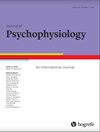Single Session Anodal Transcranial Direct Current Stimulation on Different Cortical Areas
IF 0.9
4区 心理学
Q4 NEUROSCIENCES
引用次数: 0
Abstract
Abstract. Transcranial direct current stimulation (tDCS) studies in healthy volunteers have shown conflicting results in terms of modulation in pain thresholds. The aim of this study was to investigate how single session anodal tDCS and modulated tDCS (mtDCS) of distinct cortical areas affected pain and perception thresholds in healthy participants. Five different stimulation conditions were applied at different cortical sites to 20 healthy volunteers to investigate the effects of tDCS and mtDCS (20 Hz) on pain and perception thresholds. TDCS over the motor cortex (M1), mtDCS over the motor cortex, tDCS over the dorsolateral prefrontal cortex (DLPFC), mtDCS of the DLPFC, and mtDCS over the occipital cortex were the stimulation conditions. All of the stimulations were anodal. The stimulations were given in a randomized order at 20-minute intervals. For comparison, electrical pain and perception thresholds were obtained from the right middle finger before and during the tDCS. After each measurement, participants were asked to give a score to their pain. In repeated measures analysis of variance (RM-ANOVA) test, the Condition × Time interaction showed no significant influence on changes in pain, perception thresholds, and pain scores ( p = .48, p = .89, and p = .50, respectively). However, regardless of the condition types, there was a significant difference in pain and perceptual thresholds during tDCS ( p = .01, p = .025, respectively). Our findings did not support difference in pain and perception modulation by a single session anodal tDCS over M1 and DLPFC compared to the occipital cortex in healthy volunteers. The increase in all thresholds during tDCS, irrespective of conditions, and peripheral sensations, including an active control group, taken together, suggest a placebo effect of active tDCS. Future studies about pain and perception in healthy subjects should consider the level of experimental pain and a strong placebo effect.单节经颅直流电刺激对不同皮质区的影响
摘要在健康志愿者中进行的经颅直流电刺激(tDCS)研究在疼痛阈值的调节方面显示出相互矛盾的结果。本研究的目的是研究不同皮层区域的单次阳极tDCS和调制tDCS(mtDCS)如何影响健康参与者的疼痛和感知阈值。在20名健康志愿者的不同皮层部位应用五种不同的刺激条件,以研究tDCS和mtDCS(20 Hz)对疼痛和感知阈值的影响。运动皮层(M1)上的TDCS、运动皮层上的mtDCS、背外侧前额叶皮层(DLPFC)上的TDCS、DLPFC的mtDCS和枕叶皮层上的mtDCS是刺激条件。所有的刺激都是阳极的。刺激是以20分钟的间隔以随机顺序给予的。为了进行比较,在tDCS之前和期间从右中指获得电疼痛和感知阈值。每次测量后,参与者都被要求对自己的疼痛进行评分。在重复测量方差分析(RM-ANOVA)检验中,条件×时间交互作用对疼痛、感知阈值和疼痛评分的变化没有显著影响(分别为p=.48、p=.89和p=.50)。然而,无论条件类型如何,tDCS期间的疼痛和感知阈值都存在显著差异(分别为p=0.01和p=0.025)。与健康志愿者的枕叶皮层相比,我们的研究结果不支持在M1和DLPFC上单次阳极tDCS对疼痛和感知调节的差异。tDCS期间所有阈值的增加,无论条件如何,以及包括主动对照组在内的外周感觉,综合起来,表明主动tDCS的安慰剂效应。未来关于健康受试者疼痛和感知的研究应该考虑实验性疼痛的水平和强烈的安慰剂效应。
本文章由计算机程序翻译,如有差异,请以英文原文为准。
求助全文
约1分钟内获得全文
求助全文
来源期刊

Journal of Psychophysiology
医学-神经科学
CiteScore
2.60
自引率
7.70%
发文量
25
审稿时长
>12 weeks
期刊介绍:
The Journal of Psychophysiology is an international periodical that presents original research in all fields employing psychophysiological measures on human subjects. Contributions are published from psychology, physiology, clinical psychology, psychiatry, neurosciences, and pharmacology. Communications on new psychophysiological methods are presented as well. Space is also allocated for letters to the editor and book reviews. Occasional special issues are devoted to important current issues in psychophysiology.
 求助内容:
求助内容: 应助结果提醒方式:
应助结果提醒方式:


